Disclosure: Privacy Australia is community-supported. We may earn a commission when you buy a VPN through one of our links. Learn more.
8 Common PayPal Scams + How to Avoid Them in 2024
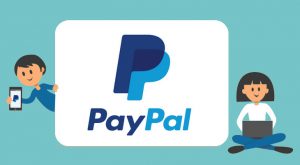
PayPal is one of the most used online payment systems across the globe. It’s relatively safe and has no connection to your bank account, preventing identity theft and more.
In today’s online atmosphere, attacks are on the rise, some of which use tricky tactics that users may not be on the lookout for.
To protect your PayPal, take a look at 8 of the most common PayPal scams and what you can do to avoid them.
Table of Contents:
- What is a PayPal Scam
- How Often do they Happen
- 8 of the Most Common PayPal Scams
- How PayPal Responds to Scams
- Protect Yourself from Scams
What is a PayPal Scam?
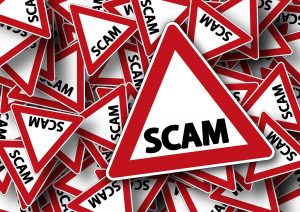
PayPal scams can take many shapes and forms. Most of the time, they come via email, phishing sites, malicious ads, and even corrupted links.
Scams are nothing like they used to be, with cybercriminals using advanced tactics to create schemes that users might not even suspect to be suspicious.
It’s becoming difficult to identify scams, mostly because surfers aren’t sure what they should be looking out for.
PayPal scams are happening at a higher rate than ever before, with many taking longer to detect and resolve.
How Often do they Happen?
According to Statista, 2020 saw around 15.3 thousand online shopping scams. As of February, that number was already close to 3 thousand, making online shopping scams something that is growing in frequency. PayPal is a common target, especially since it’s a preferred payment method for many shoppers that make purchases online.
PayPal scams take many shapes and forms, most of them attempting to exploit weaknesses in the systems and processes for purchasing items. If you’re a PayPal user, take a look at these top PayPal scams, learning how you can prevent them from happening and keep your devices and accounts secure.
8 of the Most Common PayPal Scams ➡️
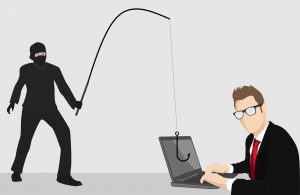
Falling victim to a scam happens more often than you might be comfortable admitting.
To keep yourself protected and know what you should keep a lookout for, here are 8 of the most common PayPal scams and key things that you can do to avoid them.
1. Advanced Fee Scams ❗️
Advanced fee scams got the nickname “Nigerian Prince” after one round of scams promised users a large sum for a small initial investment. These scams are typically sent via email and feature suspicious titles like “You’ve Received a Heritance” or “Immediate Contract.”
The Scam
When a cybercriminal gets access to your email, they can send malicious links or requests for information in hopes that you give them a click. With most advanced fee scams, cybercriminals would create a well-worded email, expanding that you’ve received a large sum of money (like 10 million dollars!)
While that sounds like a dream, it’s not real and is used as a tactic to collect info. Typically, the email will request detail in exchange for this sum, including the recipient’s full name, passport number, and even their banking details.
The Dangers
The goal of an advanced fee attack is to collect personal details about users. Because they have access to email, they could use other details to attempt to steal identities, even making transfers from bank accounts if they have enough information.
How to Avoid Fee Scams
If you’re using a secure email, you’ve likely got a solid means of protection. Emails like these often end up in spam, flagged for suspicious activity. If one happens to slip, there are a few key things to check for, including:
- Typos
- Strange email addresses
- Faulty logos
- Requesting sensitive details
Make sure that your receive mail from a legitimate source and never send advanced payments unless you’re aware of who it’s coming from.
2. Account Issues Scam ❗️
One savvy tactic that cyber criminals try to get by with is to send an account error message. Normally, the text reads something like “There’s a problem with your account.” These have gotten very detailed, with scam messages appearing official-like, some even coming with PayPal’s logo.
The Scam
Using your account as a target, cybercriminals will create an email and claim that you have an issue with your account. They will provide a link in the email that they tweak to look like a legitimate PayPal link, though it’s really a malicious link.
If this link is clicked, there is a chance that malware can be installed or that you could allow someone access to your system where they can launch a number of attacks.
How to Avoid Account Issues Scams
First and foremost, never respond to emails that look suspicious. If you did, report it immediately to PayPal, as they will take steps to lock your account, so no activity can take place.
With any kind of email that tries to mimic PayPal (or any other legitimate entity), you can send it to [email protected].
If you suspect an email from PayPal to be suspicious, check where the email is coming from (click the email address from the sender to reveal the whole thing). If it’s a long email that’s not a PayPal official email address, then it’s best not to click anything and report it immediately.
3. “Friendly Name” Scams ❗️
Businesses use “friendly names” to appear more like a real person in your inbox. Instead of showing up as their business name, they may use an actual name, using that as a way to avoid spam filters.
The Scam
When creating a “friendly name,” there are no regulations, allowing anyone to link their email to a seemingly legitimate name. They could hide behind government names or names like PayPal, which typically won’t get filtered out by spam.
Most of the time, these emails contain messages with links, most of which lead to corrupted sites or download malware onto a system. Either one could lead to some serious consequences, allowing hackers access to sensitive information.
How to Avoid “Friendly Name” Scams
Even if it is an email from a legit name, be sure to check the email it’s being sent from. Though they can add a friendly name, the entire email address is also attached and cannot be removed.
Another trick is to skim the email, check the content, and search for errors or suspicious logos that don’t go with the company.
4. Phishing Scams ❗️
Phishing is nothing new, now using a number of advanced tactics to try and trick those who are browsing the web. There are all kinds of phishing scams, most of them using similar techniques to try and steal sensitive information.
The Scam
A phishing scam uses legitimate websites to try and trick surfers online. Among the largest are names like Facebook, Google, and PayPal, as many of these have access to sensitive user details.
Cybercriminals will create a website or an email that looks like it’s coming from a legitimate entity, attempting to steal information that users wouldn’t mind giving.
They not only create websites but, sometimes, they post to social media sites, sharing promotions that are meant to capture attention and linking the malicious site to the promo.
When browsers click the link, they’re redirected to the seemingly legit website, only to go to one that’s fake and attempting to steal info.
Sometimes, these websites can be hard to spot, as some online criminals pay close attention to all of the details, making websites that seem legitimate.
If you do make it to these websites, cybercriminals try to set them up so you can add your account information, giving them an easy way to log into your account.
How to Avoid Phishing Scams
These are a bit harder to spot, especially if users are in a hurry or not paying close attention. In most cases, the best way to avoid a phishing scam is to check out all of the details. That means looking for content that is misspelled, URLs that seem odd, or links that don’t seem to fit the context.
Some of the fake PayPal sites that have popped up over the years have been really hard to spot, and they’re getting more sophisticated over time. One sure way to check is the URL, as only PayPal can have its unique URL.
To do so, you can head to the lock symbol found in the search bar of your browser. From there, you’ll just need to click it and find “Certificate,” heading to “Details” after that.
Scroll down to the section that reads “Field,” and click on “Subject.” If it says “pay.com,” then it’s coming from PayPal. If not, you might be on a phishing site that’s mimicking PayPal.
5. Fake Hyperlink Scams ❗️
Links are everywhere, making their way into articles, ads, social media, and more. Cybercriminals typically use links and embed them into emails, SMS, and even websites in hopes to get clicks.
Hiding behind these links could be a phishing website or malware that could affect the device. In either case, they can be dangerous, making it something that surfers should keep an eye open for.
The Scam
Links show up in different places and are typically a different color. Most of the time they are blue but sometimes they show up as red or green. Using these tactics, cybercriminals will add text like “Click Here,” or “Visit Our Site.”
They will embed these links into any place they think will get a click, including web pages, social media posts, and even emails and SMS.
When they send it and the recipient clicks, it could take them to a malicious site, allow them access to their device, or even result in the installation of malware that will crash the system.
How to Avoid Fake Hyperlink Scams
Most hyperlink scams are easy to spot, looking quite obvious to the trained eye. Those who are surfing the web should always use caution, making sure that they don’t click anything that they don’t know.
Also, they can use antivirus and other programs to help, checking websites and all permissions before allowing their device to connect.
If the hyperlink is clicked and does go to a website that seems fake, users are urged to log off and shut down their device to avoid any malicious activity.
6. Charity Scams ❗️
Hiding behind entities with good intentions is nothing new. Some of them include charities, churches, or even unbelievable investment opportunities. Some of these scams are very predictable, though they are increasing in sophistication each and every day.
If cybercriminals can get ahold of a victim’s search history or find out basic information, they can use that to their advantage, using it to tailor messages and ads to them that will make them more prone to attack.
The Scam
Typically, scammers try to hide behind a tragedy to capture the attention of their victims. In 2020, the pandemic left many without resources, forcing businesses to shut down and individuals to seek financial relief somehow.
Because it was a very sensitive time filled with disaster, many scammers used it to their advantage, constructing emails that would pull at the heartstrings.
Apart from charities, scammers would create fake investment opportunities, promising victims that they would become rich if they completed a few tasks.
These “too good to be true” charities were masking criminals, hiding behind emails and SMS messages that attempted to get clicks.
How to Avoid Charity Scams
Any time that you receive a message in your PayPal account or an email that’s coming from PayPal asking for donations, you should automatically take caution. Typically, PayPal doesn’t ask for donations and doesn’t sponsor charities.
If the email or message is asking you to use your PayPal to send donations or asking you to invest with your PayPal funds, be sure that it’s a legitimate organization or person before doing so.
Remember, criminals, try to target victims that are empathetic, hiding behind anything from children to churches and even incredible investment properties.
One thing that you can do if you’re unsure whether the organization is legit is checking the Australian Competition & Consumer Commission (ACCC).
The ACCC is a place where a company’s reputation is displayed for all to see, showing how they have treated other customers in the past. If you can’t find an ACCC rating (red flag), head over to Google or your favorite search engine for a search.
Don’t just visit the legitimate website, be sure to also account for review pages, social media, and forums where the organization or investment institution is listed.
If you can’t find anything (red flag) or run into negative reviews and opinions, you might want to avoid donations altogether, looking for credible charities and organizations that could use a hand instead.
7. Overpayment Scams ❗️
In a PayPal overpayment scam, the PayPal account is targeted directly, making it a dangerous one that is easy to skim past.
For those that have a business account and process payments frequently, scammers could create orders and overpay, requesting that the overage be paid back to them. In some cases, all accounts are legal, though they could be stolen.
If PayPal detects fraudulent activity, then the account will be canceled and so will the payment, leaving you without any funds in the process.
The Scam
Cybercriminals hide behind legit bank accounts, credit cards, and businesses, purchasing an item or service from you. Instead of paying the amount agreed upon, they pay an overage, later asking for a return on the difference.
In most cases, they request that you send the return to a different account, one that is connected to them personally.
A lot of times, cybercriminals will make the initial purchase using a stolen card or account, purchasing an item for more than the item is sold for. Days later, they will request a return of the overage, attempting to get businesses or individuals to send them back the overage paid.
While it doesn’t hurt most businesses in the beginning, it could hurt them later on, especially if fraudulent activity is chosen by the true owner of the credit card.
PayPal will issue a refund of the entire purchase amount, leaving businesses to deal with the cost of the product sold.
How to Avoid Overpayment Scams
No one wants to pay more for an item than they have to. When you find buyers that pay a significant amount more, it should raise a red flag and leave you questioning whether or not the purchase is legit.
If they are using a PayPal account, check to see if all of the user information matches up before shipping the item.
If you do believe that there has been some sort of attempt to collect and overpayments from your business, one of the first things you should do is notify PayPal. They will investigate the issue first and try to get to the bottom of it.
If contact details are available, you can also contact the buyer directly, attempting to find out the reason why they overpaid and whether they are the true account holder.
8. Shipping Address Scams ❗️
Cybercriminals can use an invalid shipping address to attempt to scam sellers at PayPal, taking advantage of one of PayPal’s guarantees.
When someone adds the wrong address and the package is sent back to the seller, additional attempts could be made or the package can fall into the wrong hands, never officially delivered.
In either case, delivery services will eventually flag the item as undeliverable, at which time buyers can give a new, valid address. This could mean trouble for the seller, as there is no proof that the item was ever delivered
The Scam
When attempting to use this PayPal scam, scammers will add an invalid address to their order. The seller will send the item to the address, unaware that it’s invalid. The item will go through attempt after attempt of delivery, only to wind up marked as undeliverable.
While all of this is taking place, scammers will have the chance to change their address to a valid one and file a claim with PayPal claiming that they never received their item.
PayPal will typically refund the amount, adding it to the PayPal account or banking account that is on file, even though the seller likely received their package at a different address.
When buyers use a shipping address scam to get items without having to pay, the seller is out both the item and the funds made from covering it.
How to Avoid Shipping Address Scams
PayPal does have seller protection, though one part of it does not account for packages that are sent to the wrong address. There is not one single way to avoid a shipping address scam, with PayPal sellers advised to use caution when they notice certain trends.
While a scam may happen, reporting them to PayPal is one way to keep them from happening again. If buyers notice suspicion with shipping addresses and packages are not delivered, they should take steps to block the buyer in which the event happened and keep a close look at buyer trends and claims.
How PayPal Responds to Scams

PayPal does have protection for both buyers and sellers, most of them geared toward keeping online purchases safe and secure.
In order to use these protections, buyers and sellers both have to abide by a number of safe practices, including:
- Shipping only to the address provided in the transaction details of a buyer’s order.
- Items must be physical items and cannot be digital items or services
- Any requested documentation coming from PayPal to check the legitimacy of orders is expected in less than 10 days.
- Seller’s address must be in the same country as their buyers
When buyers try to scam claiming that their item was never received, buyers can use the help of PayPal and their services as long as:
- Payments are marked as eligible
- Online tracking is available for buyers
When there is the use of unauthorized payment to purchase items with a PayPal account, sellers will need to:
- Ensure the payment was marked “eligible” on the transaction details page
- Provide proof of delivery of the item in question
Not all transactions through PayPal are eligible for seller protection. PayPal will not step in and help if you do any of the following.
- Have claims or chargebacks filed due to differences in item appearance online and in-person
- Only have digital items and no physical items for sale.
- Items are picked up by buyers instead of shipped.
- You receive multiple payments for the same item
- You sell any prohibited items including drugs and/or weapons
Buyers too can get scammed, thinking that they are purchasing an item that is legitimate when it is not. Buyers also get PayPal protection as part of their guarantee, which included coverage in the event that:
- The item you purchased does not match
- You received less quantity of items that you purchased
- Your item was damaged during shipping
- The item you received was fake
Though PayPal Purchase Protection extends to buyers, there are some instances that PayPal will not cover, this includes purchases on:
- Motorized vehicles
- Industrial machinery
- Any times that violate PayPal policies
- Any money transactions sent through PayPal
- Any items that were accurately described by the seller
Protect Yourself from Scams 🛡️
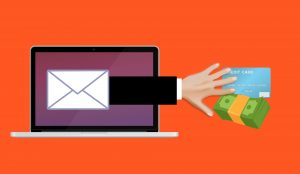
Scams are nothing new, though the methods used are constantly evolving. Scammers are always on the hunt for ways that they can trick users, acting as buyers or sellers of particular items.
When using PayPal, they try a number of scams, all of which target a different process of purchasing online. To better protect yourself from scams, here are a few things you can do.
Secure your Browser
Before getting into specifics, you should start by only using secured browsers when surfing the web and logging into accounts.
This will keep your account from getting into harm’s way, preventing the growing number of attacks online. You may want to also add a VPN to your setup, limiting the external dangers that can tap into your account.
Email Configuration
Since a lot of PayPal scams target the email, it’s good to be mindful of your email habits and configure your email accordingly.
That means taking precautions when receiving a suspicious email and always checking who emails are from. In addition, you should beef up your spam filter, preventing mail from scammers.
If you do receive an email that raises suspicion, it’s best not to click links and to report it. PayPal is there to help if you think you’re a victim of phishing scams or fraud, so be sure to send a copy their way.
Read up on Common PayPal Scams
When you know the type of scams that cybercriminals are launching online, you’ll have a better idea of what to look out for.
To protect yourself, try and read up on PayPal scams and how scammers are launching them. It will make you more aware of the possibilities and help you better spot suspicious activity when it pops up.
Check Reputability
Since some scams attempt to use false names and businesses to trick victims into purchasing items, sending money, or providing sensitive details, it’s a good practice to always check the reputability of entities that you don’t know.
You can run a quick search with your browser or look at the ACCC to see if there are any details or complaints.
More than likely, if you can’t find any information, you may be dealing with a fake website or scammer. If it seems sketchy, it probably is, and more than likely you can find what you’re looking for elsewhere.
Be Weary of Requests
Unless you know who your request is coming from and what the request is for, you want to use caution when sending money. PayPal makes sending and receiving money easy, which can be both a good thing and a bad.
Anyone can send over a request, doing so to try and scam users into sending them money. To avoid getting scammed and sending to an unknown user, be wary of requests and only send them when you know who you’re sending them to.
Keep Up with Items
Whether you’re buying or selling with PayPal as a payment option, you should always keep up with items sold and/or purchased.
A lot of times, scammers use PayPal’s policies as a way to find loopholes that will allow them to use items to scam sellers. Sellers too can scam buyers, sending them items that are nothing like what they think they purchased.
If any suspicious activity when buying and selling items is noticed, you should report to PayPal immediately and avoid buying or selling until all is cleared up.
If It’s Too Good to Be True…
As the saying goes, if it’s too good to be true, it probably is. If you receive an email or a message with details about an investment using your PayPal account or asking you to donate to a charity, it’s possibly a scam, especially if they’re promising you a huge amount of money in return.
Even if you think you have rich relatives you don’t know about, you’re likely not going to be contacted by them via email and perhaps something more official that informs you of your inheritance.
Use Caution on the Web 🖥️
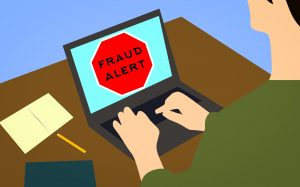
The web is a great place to shop, with PayPal being one of the most used payment methods for online purchases.
Its popularity has made it a target among scammers, with many trying to mimic the payment method to try and trick buyers into clicking malicious links.
Because the attack space is expanding and tactics used for scamming are getting much more advanced, it’s critical to protect yourself, brushing up on the most common PayPal scams.
Apart from knowing what to look for, all online shoppers should take measures to protect their devices and network, making sure they can stop malicious attacks before they start.
Online, if it seems too good to be true, it probably is, so, most importantly, use common sense before opening or responding to any email, text message, or suspicious item.
You Might Also Like:





